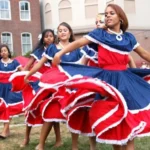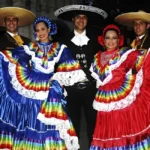The Cayman Islands, known for their pristine beaches and vibrant culture, also have a fascinating story to tell through their traditional clothing.
Although modern fashion dominates daily life, traditional attire reflects the island’s history, blending influences from African, European, and Caribbean cultures. This unique fusion is celebrated during cultural events, offering a glimpse into the islands’ heritage.
Historical Context of Caymanian Traditional Clothing
The evolution of clothing in the Cayman Islands is tied to its history:
- Indigenous Influence: Early settlers relied on functional clothing made from natural fibers like cotton and palm leaves, suited for the tropical climate.
- Colonial Era: British colonial influence introduced European styles, including tailored garments and formal dresses.
- African Heritage: The legacy of enslaved Africans brought vibrant patterns and headwraps, enriching the island’s cultural tapestry.
Over time, this mix of influences has shaped the traditional attire seen in the Cayman Islands today.
See also Traditional Clothing in Puerto Rico: A Vibrant Blend of Taino, Spanish, and African Heritage
Traditional Clothing in Puerto Rico: A Vibrant Blend of Taino, Spanish, and African HeritageKey Features of Traditional Caymanian Clothing
Men’s Attire
Men’s traditional clothing in the Cayman Islands is simple yet functional:
- Shirts: Loose-fitting cotton shirts, often white or pastel-colored, suited to the humid climate.
- Trousers: Lightweight trousers paired with a belt or suspenders.
- Accessories: Straw hats provided sun protection, reflecting the practical needs of seafarers and farmers.
Women’s Attire 👗
Traditional women’s clothing is both elegant and practical:
- Dresses: Long, flowing dresses made from lightweight fabrics like cotton or linen, often adorned with lace or embroidery.
- Headwraps: Women commonly wore colorful headscarves, blending African and Caribbean traditions.
- Aprons: Functional yet decorative, aprons were used in daily tasks and featured intricate designs.
Footwear and Accessories 🥿
- Shoes: Simple sandals or barefoot walking was common, reflecting the island’s coastal lifestyle.
- Jewelry: Handmade necklaces and bracelets crafted from shells, beads, or coral.
Regional Variations and Cultural Significance
Traditional clothing in the Cayman Islands varies across regions and reflects specific cultural identities:
- Coastal Communities: Lighter fabrics and simpler designs to suit the seafaring lifestyle.
- Inland Areas: More intricate embroidery and layering for festive occasions.
- Cultural Symbolism: Colors and patterns often symbolized family heritage or social status.
Traditional Clothing in Festivals and Events
While traditional attire is not part of daily life in the Cayman Islands today, it plays a prominent role during cultural celebrations:
See also Traditional Clothing in México: A Tapestry of Culture and History
Traditional Clothing in México: A Tapestry of Culture and History- Pirates Week Festival: Participants dress in historical pirate costumes, blending fun and tradition.
- National Heroes Day: Traditional clothing is worn to honor the island’s history and culture.
- Heritage Days: Showcases local crafts, dances, and clothing, highlighting Caymanian pride.
Modern Adaptations of Traditional Clothing
As global fashion trends influence the Cayman Islands, traditional attire has evolved:
- Fusion Fashion: Designers incorporate traditional patterns and motifs into modern outfits.
- Sustainable Practices: Revival of natural fibers and handmade techniques to create eco-friendly clothing.
- Cultural Awareness: Educational programs promote the preservation of traditional attire.
Preserving a Rich Legacy
Traditional clothing in the Cayman Islands is a reflection of the island’s diverse heritage. While modern styles dominate, cultural celebrations keep the spirit of traditional attire alive. By honoring their past through clothing, the people of the Cayman Islands showcase their resilience, creativity, and pride in their unique identity.
